
Perfumes of the Land and Sea
By Dr. John King
Dr. John King from the UK considers fragrances that
remind him of home and abroad.
Fragrances of the great outdoors have always appealed to me more than stylized perfumes.
The fleeting scents of wind and water, forests and lakes, sea beaches and driftwood fires –
these have thrilled me more than anything usually found in a bottle. But there are exceptions.
The perfume industry, led by firms like Givaudan, have developed the concept of ‘olfactory
scenery’, recreating for example the ambience of the Mediterranean coastline, or even venturing
out over the rainforest in airships to capture the exotic aromas there.
"This technology (ScentTrek) has enabled true reconstructions
of aspects of our beautiful planet, fragrant memories of the
wilderness which contribute to the success of many of today's
perfumes."
Perfumery has always been about travel, adventure, exotic aromatics from mysterious lands. So the choice I have in writing about perfumes evocative of places, is vast. All over the globe fragrances are sold to tourists as unique souvenirs of wherever they are visiting, and to do justice to all these products is impossible. So I have just singled out a random few which have made an impression on me, with apologies to the many excellent ones that have been omitted.
England: my home territory
Close to where I live in central
England are the Malvern Hills,
the name deriving from the
ancient British words Moel and
Vern, meaning bare mountain.
They have inspired many
Englishmen, not least our
greatest composer Edward Elgar
(who wrote the patriotic
‘Land of Hope and Glory’).
My mission has always been to
express this landscape in fragrance,
and my first attempt used a pure
aroma chemical from Givaudan,
called vernaldehyde (literally,
mountain aldehyde). A perfume
consisting 100 percent of one
aroma chemical? Yes, but before
you laugh out loud and dismiss
me as eccentric, let me explain
the rationale. I am a medic of the
older generation, drilled into me from student days was the principle: simplicity is elegance. To neatly explain a confusing variety of symptoms
with a single diagnosis, to avoid side effects by using a single drug, that was what was considered good practice. And in fact, vernaldehyde
used at the correct dosage met with fair success, so maybe it’s not as loopy as it sounds.
Nevertheless, I have not stuck rigidly to that radical position. Like most
perfume enthusiasts, I also enjoy playing around with mixtures in their
infinite variety. Currently I produce a ‘fragrance palette’ of scents typical
of the Malverns, which people can use like an artist uses paints. In
other words they can mix themselves an olfactory impression of a
ramble through the area. Malvern attracts artists of all types so the idea
has gone down well.
By and large therefore, I have come to believe to the virtues of combining.
(And so has everyone else– glance at the supermarket shelves here and
you will see everything comes at least in pairs: Lavender and camomile,
rosemary and coriander, always something and something else )
This is paralleled too in medical practice, where patients these days are
typically on a whole cocktail of drugs – and everyone is happy, especially
the pharmaceutical industry.
The company which has developed fragrance combining into a fine art is
not John King of course, but Jo Malone. One of my favorite brands, Jo
Malone is also backed by one of my favorite supply houses –Symrise,
based in Holzminden, Germany.
If you want a very natural, cool green and earthy aroma, for instance, try
Fig leaf and Cassis. Then add a dash of Malone’s Orange Blossom for
an interesting variation.
Scents of the English hills
Apart from fresh air, grass is the dominant element on the Malverns.
Grass, plus a sprinkling of wild flowers native to the local ecology.
Subtle, almost intangible odours, but how to capture them?
One way would be to persuade Roman Kaiser, the legendary scientist at Givaudan, to fly his zeppelin over to England, with some sampling equipment. It’s nearer than the rainforest, after all. I fear however that this is some way off, though he did advise me on the probable composition of the gorse scent, a shrub common on the hills.
For the time being it’s back to mixing essences drop by drop in my garage. The obvious candidates are flouve and hay oils and absolutes, extracted from wild grasses. But if you make your own fragrances you may have found, as I have done, that these materials are disappointingly difficult to use. They easily give a heavy ‘Christmas pudding’ effect. Vetiver, an oil distilled from a type of grass, is better; you can see it used to good advantage in Guerlain’s Vetiver which has a definite spicy-grassy aspect. Mate is nice if you like a slight smokiness, though can bring an association to cigarettes. Naturally extracted leaf alcohol (cis-hexenol) is very fresh, pungently grassy and valuable in small amounts. Lavender absolute is excellent and versatile, a smooth and mellow hayfields smell which is easy to use and a good friend to the amateur perfumer.
Commercial Foin Coupe notes include l’Artisan’s l’Ete en Douce and Annick Goutal’s Dans les Foins, The Sniffapalooza group were treated to an analysis of the former during the Paris trip, ingredient by ingredient, and a fine fragrance it is too.
But for the all-time best hayfields aroma I have
ever some across, we have to leave the realm
of fine fragrance and go to a humble soap.
My wife still recalls the time when a workman
came to our house to fix a floorboard and demanded
repeatedly to know 'what is that wonderful smell in
your bathroom?' It was Valobra’s fougere soap,
which the ancient Italian house makes according
to traditional methods. Needless to say, I have
laid in a large supply lest it should ever be discontinued.
Moss
The British Isles enjoys (if that is the right word) a cool,
damp and misty climate where mosses thrive. In
perfumery the odour is represented by oakmoss and
treemoss, a chief building block of the chypre family.
There is just one fragrance which says‘moss’ to me
however, and that is Lorenzo Villoresi’s Uomo. It is more
elegant than Ralph Lauren's Polo, lacking the unpleasant
patchouli undertone which accumulates on anyone who wears
the latter. Uomo reminds me that when I was 16,
I had to I had to get down on my hands and knees on biology
field trips to study mosses at close quarters. The name
of one of them is still etched on my
brain: hypnum cupressiforme.
Green perfumes
Although Floral notes dominate perfumery, to my mind green
notes are more interesting – both now and for the future.
Green has come to symbolize everything good, indeed we
even have a green party in English politics.
The example of a green perfume always
quoted is Balmain’s Vent Vert but this is
quite floral too, so let us look at some true
green notes. I have chosen one for its stridency
and the other for its subtlety.
Green, green green…and green By Miller and Bertaux
Here we have a powerfully green fragrance, a single spritz of
which will impact on your consciousness for a long time.
The exact shade of green it represents has provoked plenty
of debate on MakeUpAlley, for example:
"A light, iridescent, shimmering green of late spring."
"A bright, unswervingly cheerful, sweet green."
"A roll down a grassy hill laughing when you're a kid green."
It is bitter-minty at first, with a garden twigs aspect. Later it
becomes fruity in a way which for me stirs recollections of
picking blackberries. Especially the delicious aroma which
later filled the house when blackberry jam was being made.
So plenty of memories out of this bottle, and the box has
an intriquing design into the bargain.
Calamus (Comme des Garcons Series 1: Leaves)
Luckyscent hails Calamus as the crown jewel of all
green scents, redolent of living plants, of freshly
crushed stems and crumpled leaves.
"It’s the scent of a meadow trampled by fairies
and woodsprites" they enthuse, their imagination
running away with them as usual.
Independent reviewers agree, reporting nostalgic associations to
the gardens of their childhood. They perceive a soft and mellow green,
gentle and sweet, "like the milkiness that oozes from a just -popped
dandelion stem". King of England’s verdict? I see a brick outhouse well
stocked with plants, but it’s so realistic that I smell the bricks as well as
the plants. A first class composition in best Comme des Garcons
tradition. It gets the Royal Warrant.
In the next issue:
The fragrant joys of ploughed fields and allotments.
Watery whiffs of the Netherlands. California dreamin’
ScentTrek technology analyses the scented air around a plant without harming it.
photo courtesy of Givaudan
Fragrance Palette
Over the Rainforest
photo courtesy of Givaudan
Grass, the dominant element
Dr. John King
Other photographs courtesy of John King.
A special "thank you" to him for the fascinating article- RB
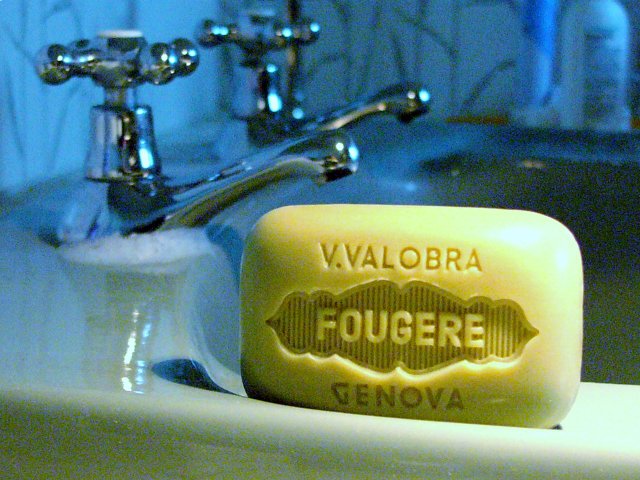
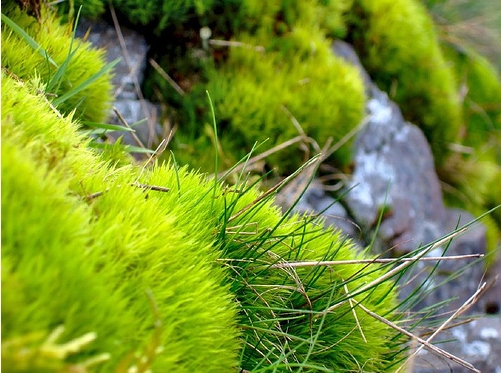
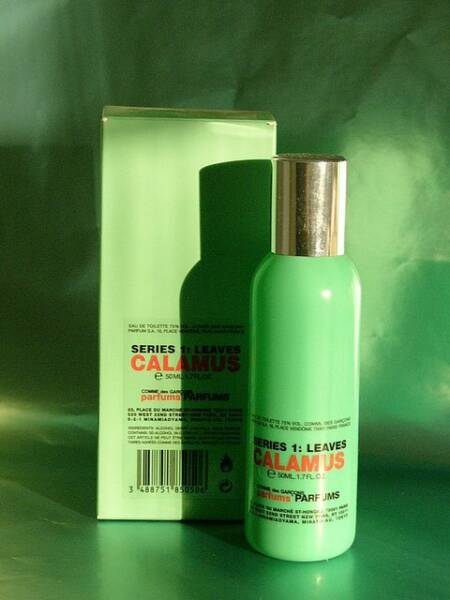

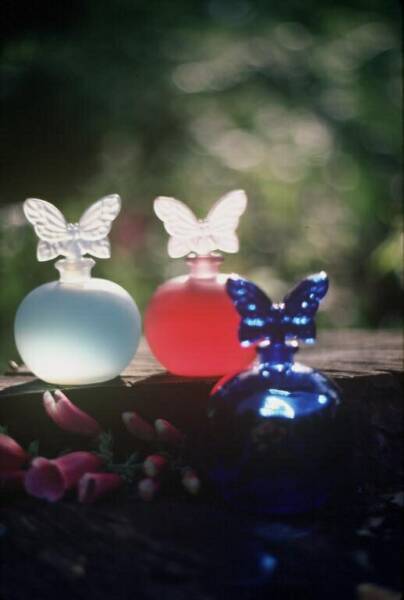
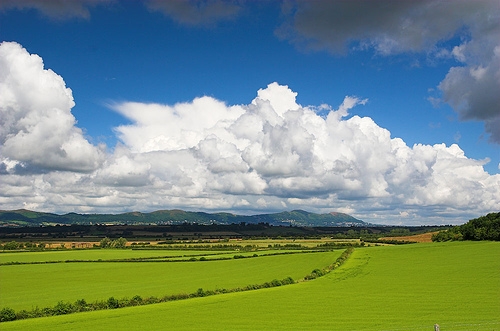

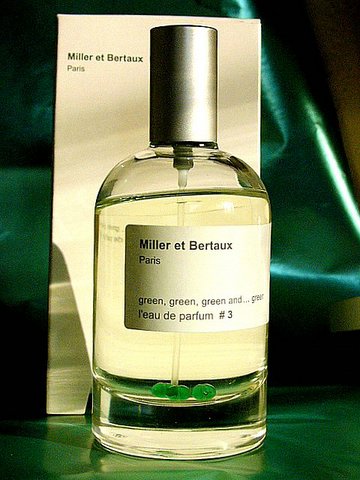

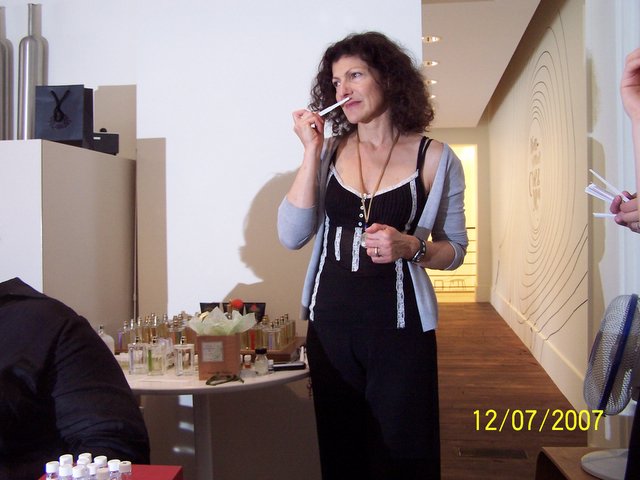
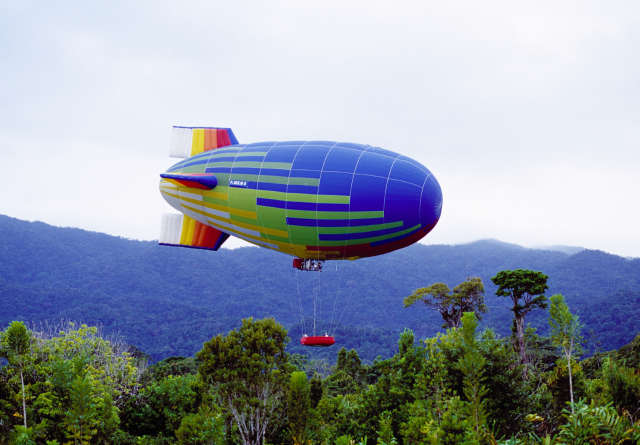
Over the Rainforest
photo courtesy of Givaudan
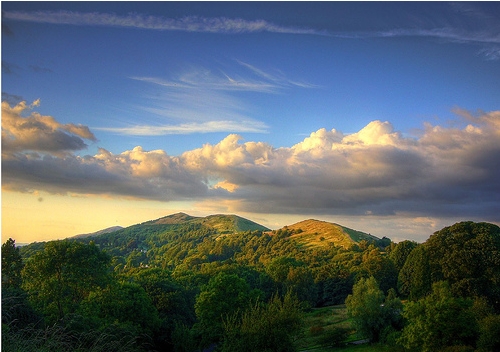
Dr. John King
Pamela Roberts of L'Artisan Parfumeur Paris demonstrates 'Ete Douce.